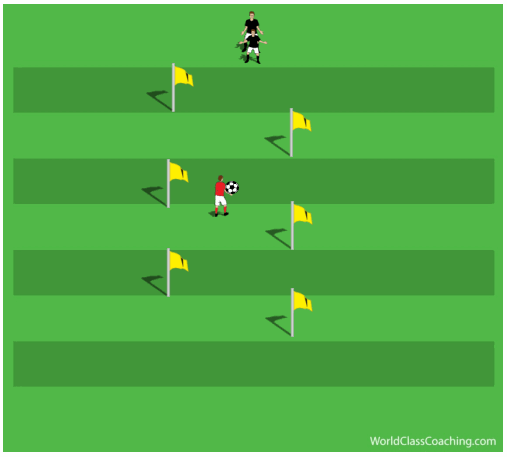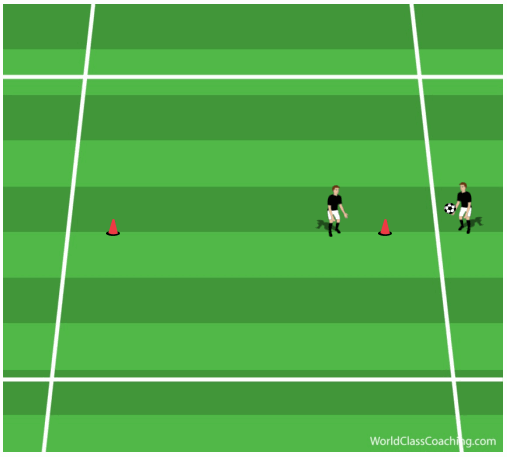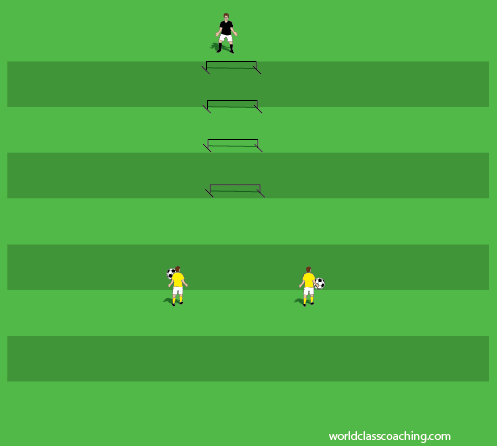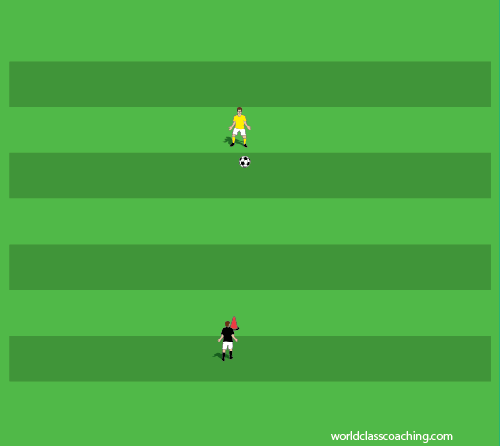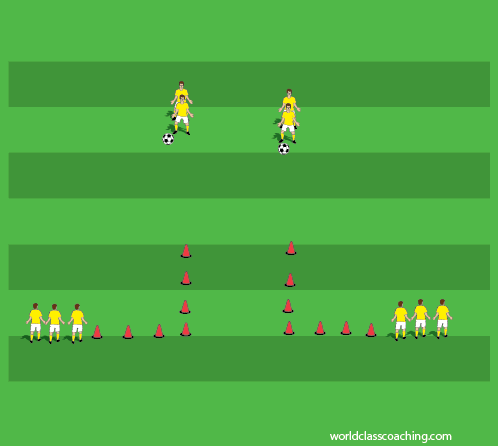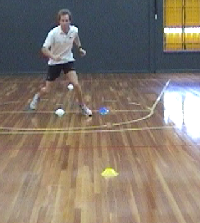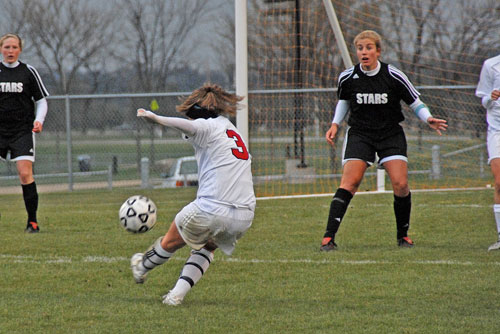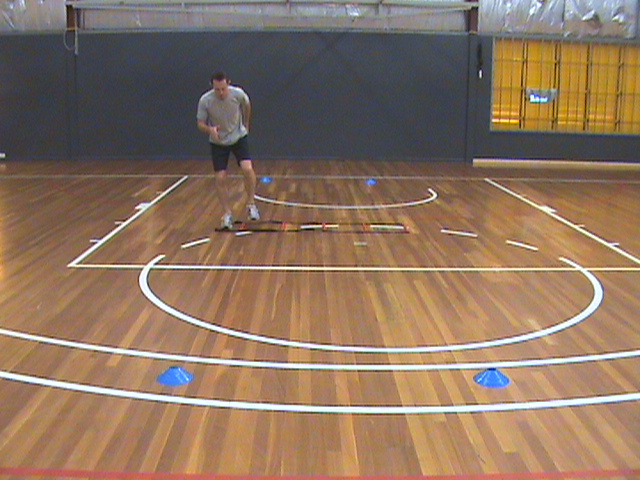By Justin Cresser
No matter what phase of the season we are in, I always include an activity that focuses on improving my Players’ first touch. I think this is extremely important, especially at the youth level.
The following is an exercise I like to use during the competition phase at it emphasizes several components of soccer conditioning. It incorporates short sprints, anaerobic conditioning, agility, and it also develops a player’s first touch. You can also use it as a warm-up routine.
Divide your players into groups of 4. Each group will have 2 working players and 2 non-working or passing players. For each group of 4, set up the following station:
Place two large ones 30 yards apart in a straight line. Have a non-working player stand at each cone with a ball at their feet. Place two small cones in between these two large cones so that they are 10 yards apart and each small cone is 10 yards away from one of the larger cones. Have a working player stand at each of these small cones facing the non-working player closest to them (Figure 1).
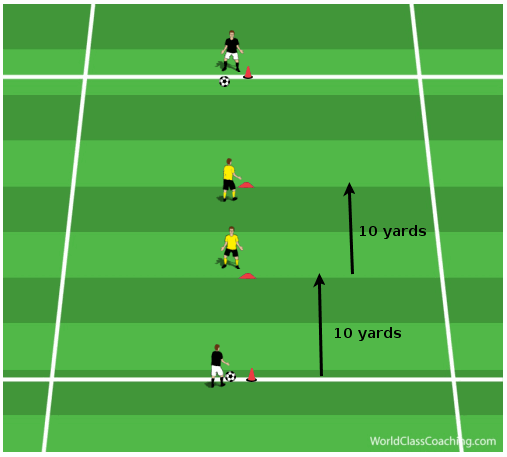
On the coach’s signal, the passing players will play a ball into space that the
Continue reading


